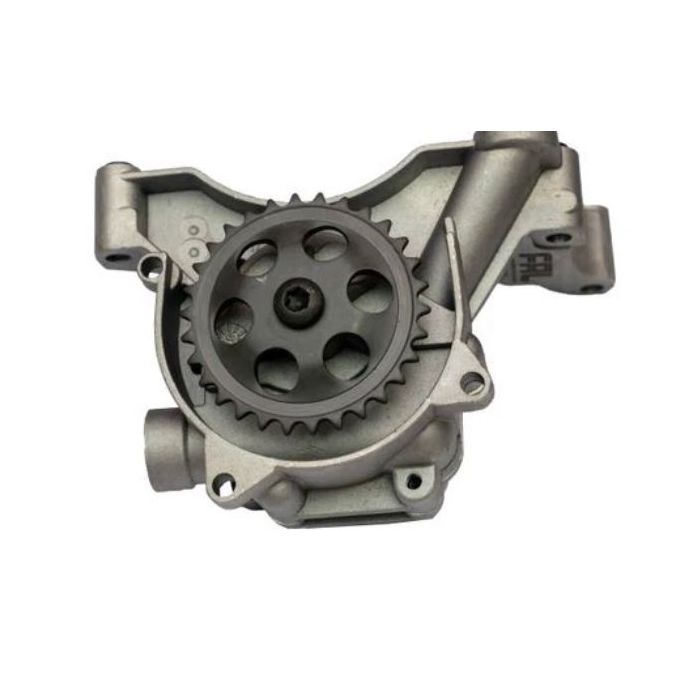Just How a Clp Engine Can Enhance Performance in Different Industries
The development of CLP engines marks a significant shift in functional effectiveness throughout numerous industries, driven by their ability to optimize gas intake and minimize downtime. Industries such as production and logistics stand to gain significantly from their durable design and consistent power result, which promise to enhance procedures and boost productivity. As companies progressively prioritize sustainability together with performance, the role of CLP engines becomes much more important. What remains to be seen is how these improvements will certainly shape the future landscape of industrial procedures and their influence on wider economic patterns (clp engine).
Summary of CLP Engines
CLP engines, or Continual Liquid Propellant engines, represent a substantial advancement in propulsion technology, particularly for room applications. These engines make use of a constant feed system that permits the sustained expulsion of propellant, bring about boosted efficiency and performance compared to typical solid or hybrid propulsion systems. By preserving a constant circulation of liquid propellant, CLP engines can accomplish much more exact thrust control, which is important for maneuvering spacecraft in numerous objective circumstances.
The style of CLP engines integrates sophisticated products and cutting-edge gas administration systems. clp engine. This causes minimized weight and raised reliability, crucial factors for long-duration area missions. The continuous operation decreases the risk of combustion instability, an usual difficulty in standard rocket engines.

Advantages in Production
The production of Constant Liquid Propellant (CLP) engines presents several notable benefits that enhance both performance and cost-effectiveness. Among the key advantages is the streamlined manufacturing procedure, which lowers the complexity connected with typical propulsion systems. By using fluid propellant, suppliers can accomplish greater precision in engine efficiency, resulting in optimized power output and lowered waste.
Furthermore, CLP engines promote a higher level of modularity, enabling simpler assimilation right into various production lines. This adaptability can substantially decrease lead times and enhance general operational adaptability. Making use of CLP technology likewise often tends to decrease the need for extensive upkeep because of less relocating components, which equates into decreased downtime and operational costs.

Applications in Logistics
Leveraging Continuous Liquid Propellant (CLP) engines in logistics supplies considerable advantages in operational effectiveness and dependability. These engines provide a robust solution for different transport requirements, allowing the original site smooth motion of items throughout large distances. The inherent style of CLP engines enables for regular power result, which translates into smoother and more predictable transportation schedules.
One of the key applications of CLP engines in logistics remains in heavy-duty products transport, where they can drive both ground and aerial lorries. Their ability to keep high efficiency under differing load problems ensures that shipment timelines are met, thus improving consumer fulfillment. Furthermore, CLP engines can be incorporated right into automated logistics systems, facilitating real-time tracking and maximizing route preparation.
Additionally, the sturdiness of CLP engines minimizes maintenance downtime, enabling logistics business to optimize their operational capacities. This is particularly valuable in warehousing procedures, where performance in dealing with and moving goods is vital. As logistics remains to progress, the assimilation of CLP engines represents a forward-thinking strategy that not only improves efficiency but likewise supports the market's growing demands for integrity and rate.
Effect On Power Effectiveness
Exactly How do Constant Fluid Propellant (CLP) engines enhance energy performance in transportation? CLP engines make use of a regular circulation of liquid gas, enhancing combustion procedures and maintaining a stable drive outcome. This design reduces energy losses linked with conventional burning engines, where fuel distribution can differ and lead to inadequacies.
The continual procedure of CLP engines permits for a much more effective thermal cycle, causing greater details impulse contrasted to traditional engines. clp engine. This equates to minimized gas usage for the exact same amount of job done, significantly lowering operational expenses throughout different transportation fields, consisting of aeronautics and maritime sectors
Additionally, the capability of CLP engines to maintain optimum efficiency under varying load problems reduces the demand for constant velocity and deceleration, better boosting fuel effectiveness. Boosted energy efficiency not only click here now adds to set you back savings but additionally causes decrease greenhouse gas discharges, lining up with international sustainability objectives.
Future Trends and Innovations
Emerging developments in Continual Liquid Propellant (CLP) engine technology assurance to reinvent the landscape of transport efficiency and sustainability. As industries pivot towards greener options, CLP engines stand at the forefront, incorporating ingenious products and design methodologies that boost efficiency while lessening environmental influence.
One of the most appealing patterns is the fostering of crossbreed systems that integrate CLP engines with sustainable power sources. This synergy can maximize gas usage and lower discharges, aligning with international sustainability objectives. Improvements in computational fluid characteristics (CFD) are helping with the layout of more aerodynamically effective engines, leading to lowered drag and improved gas efficiency.
In addition, the advancement of smart tracking systems is readied More Info to enhance operational efficiencies. These systems utilize information analytics and IoT technology to optimize engine efficiency in real-time, making certain that the engines run within their most effective parameters.
As research remains to explore alternative propellant formulas-- such as biofuels and synthetic fuels-- the future of CLP engines looks appealing. By using these developments, markets can not just enhance their efficiency however likewise contribute dramatically to a cleaner, a lot more lasting future in transport.
Verdict
In final thought, CLP engines stand for a substantial improvement in efficiency across several industries. The assimilation of innovative materials and fewer relocating components reduces maintenance requirements, while alignment with sustainability goals settings CLP engines as a crucial modern technology for the future.